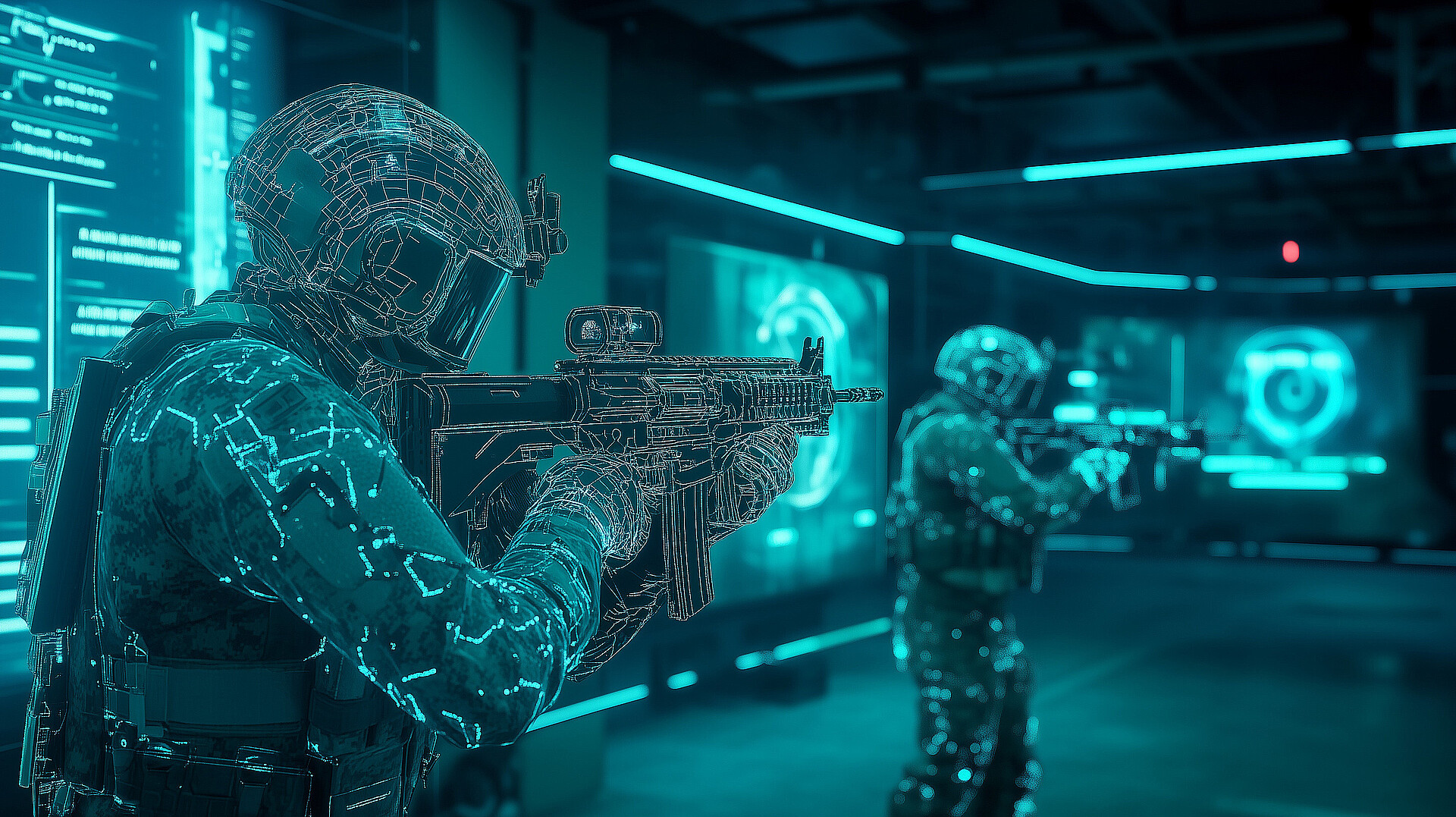- IABG Website
- Industries
- Defence
- Effects on Target
- IABG Website
- Industries
- Defence
- Effects on Target
Effectiveness, precision and protection – core pillars of German security policy as outlined in the 2016 White Paper
German security policy is grounded in the 2016 White Paper, which underscores the need for precise, scalable military operations, the protection of own personnel and the minimisation of collateral damage.
Two key statements from the White Paper (2016, translated from the original German) articulate this strategic approach:
Effect is decisive for mission accomplishment. [...] When military force is employed, precision and scalability are essential prerequisites for achieving the intended effect and avoiding harm to uninvolved parties.
The survivability and protection of our personnel and capabilities [...] are essential to fulfilling our responsibilities. At the same time, they reflect the Bundeswehr’s obligation to protect those entrusted to it.
We conduct technical-operational assessments of weapon effects – both in terms of effectiveness against intended targets and the minimisation of unintended collateral damage to friendly forces and civilians.
These assessments are based on modelling and simulation using the Universal Vulnerability Model (UniVeMo), which we develop and operate as the national standard for the Bundeswehr. UniVeMo simulates the expected damage to individual target components resulting from interactions with weapon effects and determines the corresponding functional consequences – expressed as cumulative failure probabilities of key system capabilities such as mobility, communication or firepower.
UniVeMo serves both to analyse the vulnerability and survivability of friendly systems against adversary weapons and to assess the effectiveness of own weapons against hostile targets.
UniVeMo
Any type of target can be analyzed in UniVeMo. This includes manned and unmanned vehicles operating on land, in the air and at sea, including their associated effectors.
UniVeMo Target Systems
A target system description in UniVeMo consists of a geometric model and additional properties or parameters required for the analysis. The 3D geometry must represent all functional components of the system – such as the engine, control units and operator interfaces – as well as non-functional elements like passive armour. All components are assigned the material and a fill factor, which statistically takes into account non-modeled details. Component failure functions describe the probability of component function failure in the event of damage resulting from interaction with weapon effects. A fault tree is stored for the failure of system capabilities, which contains the relevant components and describes their logical interaction, whereby particular attention must be paid to redundancies.
Target system modelling is by far the most complex and time-consuming part of the effect analysis. It requires a thorough understanding of the system being analysed, as well as expert knowledge of the mechanisms and limitations of the effects involved.
UniVeMo Ammunition
The ammunition description in UniVeMo can, in many cases, be limited to the definition of the weapon effects to be applied. For a single fragment of a warhead, parameters such as mass, material, fragment type and velocity are typically sufficient.
To simulate a direct hit between a ballistic missile and an interceptor missile – including the formation of debris – both objects must be modelled with the same level of detail as required for a target system.
UniVeMo also takes into account parameters for different fuse types, including proximity, impact and delay fuses.
UniVeMo Effects
UniVeMo can simulate the following effects:
- The kinetic penetration effect of projectiles ranging from small-calibre ammunition to bunker busters.
By integrating state-of-the-art penetration algorithms, it is possible to assess deflection caused by inhomogeneous targets (e.g. reinforced concrete with aggregates), as well as the effect of fragments made of light or heavy metal at the highest impact velocities. - Projectile-forming charges (Explosively Formed Penetrator, EFP), for example from anti-tank mines.
- Shaped charges, for example from anti-tank missiles, including the inhibiting effect of reactive armour.
- Constructed and natural fragments.
Methods for accounting for secondary fragments (Behind Armour Debris, BAD) and their reduction through liners are also included. Secondary effects such as crater ejecta, shattering glass or debris from collapsing structural walls can likewise be taken into account. - Shock and pressure loads from detonations.
These are calculated using simple free-field approximations or a highly efficient numerical solver with dynamic adaptive meshing at runtime to model pressure propagation in complex geometries, such as urban structures. Particle transport can also be simulated to represent the local dispersion of hazardous substances. - The effect against tactical ballistic missiles in all flight phases can be assessed, including the specific effects in highly dynamic intercept scenarios. Debris formation of target and interceptor as well as the release of hazardous substances can also be captured.
- Various options for assessing personnel vulnerability, up to and including biomechanical analyses.
- The evaluation of thermally acting laser weapons, taking into account relevant environmental conditions, as well as the effect of ultrashort pulse lasers.
For the development of these methods, we plan and support experiments conducted at the Bundeswehr’s technical centres, at research institutes, at industrial partners or at our own test facilities. For the targeted evaluation of these experiments, we use cutting-edge technologies – ranging from high-speed cameras to computed tomography – and develop dedicated software tools with a high degree of automation.
To support these activities, we also apply advanced numerical methods in dynamic structural and fluid mechanics – in particular using DYSMAS, a simulation system developed in-house by IABG.
- The kinetic penetration effect of projectiles ranging from small-calibre ammunition to bunker busters.
UniVeMo Results
A scenario can contain multiple targets and multiple munitions, which interact with each other. In scenario-level fault trees, the system failures of the involved targets can be logically linked to determine, for example, the probability of successfully engaging a target without causing serious harm to uninvolved persons in the vicinity. Once the simulation begins, these objects are moved, the effects are initiated and propagated based on the fuse models, and the impact of all munitions on all targets and collateral objects is calculated.
The result of a UniVeMo simulation is always the conditional probability of system failure given a hit, known as the Probability of Kill given Hit (Pk/h). In a single simulation run, this probability is determined for each target within the scenario and for every system failure defined via the associated fault tree. The assumption of a hit means that the munition reaches the target closely enough to allow for an interaction. Combined with the Probability of Hit (Ph), the overall probability of successful engagement is calculated as Pk = Ph × Pk/h. Conversely, by varying the points of impact, the optimum aim point can be determined – including for indirect fire scenarios.
Calculating the hit probability requires trajectory models that simulate the flight path of the munition from launch to target, taking into account all influencing factors and their uncertainties in order to determine the dispersion pattern at the target. We also use closed-form approximation methods, which provide a clearer understanding of the relationships between input parameters and deviation at the target than statistical evaluations from numerical Monte Carlo simulations.
UniVeMo can be fully controlled via Lua scripting, enabling a high degree of automation. In addition, the UniVeMo Lab offers a graphical user interface for interactive use, while UniVeMo Studio provides predefined workflows and validated selection options for munitions and targets, allowing also non-programmers to work productively with UniVeMo. Simulation results from Studio are automatically stored in predefined Excel or Word document templates, and many studies can optionally include illustrative animations.
UniVeMo-Light
With the development of UniVeMo-Light (UVML), a highly efficient and easily integrable solution is now available for representing effects on target within higher-level aggregated simulations.
Based on the ammunition, the target and the defined dynamic engagement scenario, UVML calculates the probability of target failure using a combination of rapid computations for hit probability and impact conditions, as well as lookup procedures for presented and vulnerable areas of the target. These are stored in pre-generated tables derived from UniVeMo’s detailed target models. The expected damage from the blast pressure of a detonation and the resulting failure probability can also be taken into account. Target object instances can be managed by the host application, enabling simulation of cumulative effects across multiple engagements.
The simplifications implemented in UVML enable several thousand calculations per second. Despite this high computational speed, UVML achieves a remarkably high level of agreement with UniVeMo. This combination of analytical fidelity and execution performance has made UVML the preferred source of effect data for many simulation models – at IABG, across industry and government agencies, both nationally and internationally.
The integration of UVML with personnel vulnerability models – including various types of protective equipment – has made it possible to independently determine national hazard values for operational weapon use in accordance with NATO specifications (CER/RED), within practical timeframes and with available resources. UVML is expected to play a central role in future cross-service Bundeswehr solutions for operational weapons planning (weaponeering).

Precise Simulations for Better Decisions
Our capabilities are based not only on sound methodological expertise in simulating effects, but also on a deep understanding of the structure and operational principles of the targets and munitions we model. Accordingly, broadly qualified and highly experienced personnel are a key success factor in every project. Continuous development of our methods and teams is driven by IABG’s own R&D funding, extensive Bundeswehr research programmes, international cooperation and technically demanding assignments.
Conducting and evaluating these extensive and complex simulations of effects on target using UniVeMo or UVML enables our customers to identify vulnerabilities, assess different solution approaches in a comparable and manufacturer-independent way, enrich higher-level simulations with realistic effect data without compromising computational performance, and derive the necessary data for operational deployment.
Apply our expertise in precise simulation and realistic effect data.
Optimise your systems, identify vulnerabilities and make well-founded decisions for effective operational use. Contact us today.

How can we help you?
Please fill in the form and we will get in touch with you as soon as possible.
